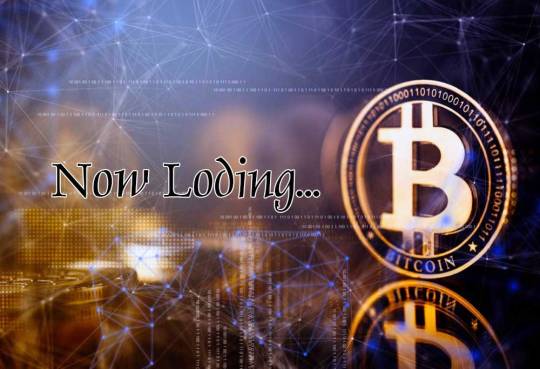#Ontology EVM Tokens
Explore tagged Tumblr posts
Text
Can Ontology Gas (ONG) make money from a Virtual Machine?
Interestingly, the builders of the Ontology blockchain think they can make money by selling access to their Ethereum Virtual Machine as Ontology Gas (ONG) tokens. A virtual machine is the digital computer that runs a blockchain. For example, the Ethereum Virtual Machine (EVM). Gas refers to the fees users pay a virtual machine to conduct transactions and perform tasks on a blockchain. For…

View On WordPress
#Can Ontology Gas (ONG) make money from a Virtual Machine?#Ontology EVM Tokens#Ontology Gas (ONG)#Ontology Gas (ONG) is Worth more than the Ontology Token (ONT)#Ontology Nodes#Uses for Ontology Gas (ONG)#What Value Does Ontology Gas (ONG) offer?#Wing Finance
0 notes
Text
バイナンススマートチェーン(BSC)の使い方|イールドファーミングの始め方
https://www.bulimbaoztag.com/binance-smart-chain/
バイナンススマートチェーン(BSC)の使い方|イールドファーミングの始め方

バイナンススマートチェーン/Binance Smart Chain(BSC)は、DeFi界隈で人気のイーサリアム仮想マシーン(EVM)との互換性に特化したブロックチェーンです。
ブラウザー拡張で機能する手軽さと超高速取引・低コスト(ガス代が安い)で取引できる点、高利率でのステーキングやマイニングができる点も魅力が詰まっています。
今回は、Binanceの独自ブロックチェーン「バイナンススマートチェーン(BSC)の特徴や仕組み」から「設定方法やファーミングの始め方」まで網羅してお伝えしていきます。
最後まで読むことで、利回り500%以上のプロダクトも多数存在する高配当ファーミングの世界に招待できるので参考にして始めてみて下さいね♪
バイナンススマートチェーン/Binance Smart Chain(BSC)とは|特徴や仕組み・メリットとデメリット
BSCのメリット BSCのデメリット
イーサリアムとの互換性が高く拡張性も高い
パブリックブロックチェーンでパーミッションレス
アプリケーション開発が可能
クロスチェーン接続が可能
イーサリアムよりブロック生成時間が早い
Proof of Staked Authority
イーサリアムよりガス代が安い(1gwei=10=0.00000000001BNB)
成長スピードが早く短期間で大きな進化をする
KYC不要で取引可能
BSC上でしか使えないしか使えないトークンがある
イーサリアム
スマートコントラクトのサポートがない
資産や秘密鍵の自己管理
進化スピードが早く使い方に変化が生じるリスク
手数料支払いがBNB暗号資産に限定されている
上記にもまとめていますが、バイナンススマートチェーン/Binance Smart Chain(BSC)を利用するにはメリットやデメリットを十分に把握しておく必要があります。
バイナンススマートチェーン/Binance Smart Chain(BSC)とは、イーサリアム同様にアプリケーション開発できるBinance独自のブロックチェーンで、ETHと互換性のあるシステムです。
ETHとの互換性があるためイーサリアム上のDAppsをBSCに移行も可能で、非中央集権のDEX(分散型取引所・ノンカストディアル)における高速取引を実現しています。
バイナンススマートチェーン(BSC)の最大の特徴は、DEX(分散型取引所)を使って暗号資産売買する個々人同士が自分の秘密鍵とアドレスを使って取引します。
そのため、資産を取引所に預けるのではなく自分自身で秘密鍵まで管理する必要がありセキュリティ対策等においても自己責任下で利用することになります。
また「BEP2」や「BEP20」などのトークン規格に沿って取引することになり、ブラウザー拡張機能を使った取引やクロスチェーン(別ブロックチェーン通信)も可能な次世代取引ツールと言えます。












教頭
イーサリアムとの互換性があるためETH上で開発されているDEXのPancakeSwapやBeefy.Financeでの取引や、メタマスクなどのEthereumウォレットにも利用可能です。
イーサリアムのERC-20とバイナンススマートチェーンのBEP-20は全く同じ、という解説するほうが分かりやすいかもしれませんね♪
BSCはバイナンスのアカウント開設が必須です
https://www.bulimbaoztag.com/binance-register-login/
バイナンススマートチェーン(Binance Chain)とバイナンスチェーン(Binance Smart Chain)の違い
バイナンスチェーン(Binance Chain) バイナンススマートチェーン(Binance Smart Chain) コンセンサス DPoS(Delegated Proof of Stake) PoSA(Proof of Staked Authority) バリデーター数 11 ~21 平均ブロック数 1秒未満 ~5秒 プログラマビリティ BEP EVM互換のスマートコントラクト クロスチェーン BEP3はハッシュタイマーロックコントラクト関数と、ブロックチェーン間トークンペグを処理するためのさらなるメカニズムを導入しています。 BSCには、効率的なネイティブデュアルチェーン通信が付属しています。高速でスムーズなユーザーエクスペリエンスを必要とする高性能dAppのスケーリング用に最適化されています。
上記にもまとめていますが「バイナンスチェーン(Binance Chain)」と「バイナンススマートチェーン(Binance Smart Chain)」には明確な相違点があります。
「バイナンスチェーン(Binance Chain)」は、高速取引に最適化されているためプログラマビリティが���軟性に欠ける特性を持っています。
「バイナンススマートチェーン(Binance Smart Chain)」は、スマートコントラクト機能とイーサリアム仮想マシン(EVM)互換性があるため、分散型アプリケーションを開発するための環境を備えたブロックチェーンです。












教頭
「バイナンススマートチェーン(Binance Smart Chain)」は「バイナンスチェーン(Binance Chain)」がオフラインでも稼働する独立したプライベートブロックチェーンです。
2者は名前は似ていても異なる性質を持ったブロックチェーンと言えるのです。
バイナンススマートチェーン/Binance Smart Chain(BSC)|対応DEX取引所・DApps イールドアグリゲーター(Yield Aggregators)
DEX(分散型取引所) DApps(Yield Aggregators|イールドアグリゲーター)
DexGuru
1inchi.Exchange
Dodo
IDEX
PancakeSwap
Multichain.xyz など
Autofarm
Beefy Finance
Venus
Harvest
PancakeSwap
BurgerSwap
cream など
BSC暗号資産(仮想通貨)銘柄の種類一覧
Binance Coin(BNB)
Binance USD(BUSD)
PancakeSwap(CAKE)
The Graph(GRT)
Ontology(ONT)
1inch(1INCH)
Bitcoin Standard Hashrate Token(BTCST)
Venus(XVS)
DODO(DODO)
Reef(REEF)
Alpha Finance Lab(ALPHA)
Swipe(SXP)
Travala.com(AVA)
Wrapped BNB(WBNB)
Linear(LINA)
SafePal(SFP)
BakeryToken(BAKE)
MATH(MATH)
RAMP(RAMP)
Injective Protocol(INJ)
Vai(VAI)
LTO Network(LTO)
Trust Wallet Token(TWT)
MiL.k(MLK)
Beefy.Finance(BIFI)
saffron.finance(SFI)
BSCPAD(BSCPAD)
Nerve Finance(NRV)
Bella Protocol(BEL)
Dego Finance(DEGO)
Unifi Protocol DAO(UNFI)
Phoenix Global(PHB)
Frontier(FRONT)
Belt(BELT)
Bounce Token(AUCTION)
Cream Finance(CREAM)
Spartan Protocol(SPARTA)
FREE Coin(FREE)
Drep [new](DREP)
Helmet.insure(HELMET)
Burger Swap(BURGER)
ZeroSwap(ZEE)
DeXe(DEXE)
JulSwap(JULD)
Anyswap(ANY)
VIDT Datalink(VIDT)
Auto(AUTO)
ForTube(FOR)
suterusu(SUTER)
JustLiquidity(JUL)
Bondly(BONDLY)
AntiMatter(MATTER)
Poolz Finance(POOLZ)
Bounce Token (OLD)(BOT)
BUX Token(BUX)
Oraichain Token(ORAI)
Goose Finance(EGG)
Crowns(CWS)
SwftCoin(SWFTC)
Multiplier(BMXX)
DOS Network(DOS)
Berry Data(BRY)
Mettalex(MTLX)
ERC20(ERC20)
Argon(ARGON)
WOWswap(WOW)
BillionHappiness(BHC)
HyperBurn(HYPR)
Seedify.fund(SFUND)
Swirge(SWG)
HyperAlloy(ALLOY)
Hydro(HYDRO)
Innovative Bioresearch Coin(INNBC)
Wealthlocks(WLT)
Ditto(DITTO)
YVS.Finance(YVS)
Cubiex(CBIX)
Shield Protocol(SHIELD)
Space Cow Boy(SCB)
Streamity(STM)
Ethereum Yield(ETHY)
PancakeBunny(BUNNY)
7up Finance(7UP)
JustLiquidity Binance(JULB)
Midas Dollar Share(MDS)
Midas Dollar(MDO)
Wault Finance(WAULT)
CheeseSwap(CHS)
DeFiPie(PIE)
ACryptoS(ACS)
fry.world(FRIES)
RamenSwap(RAMEN)
PayRue (Propel)(PROPEL)
Sashimi(SASHIMI)
Phoswap(PHO)
Friction Finance(TAO)
ETG Finance(ETGF)
Crudeoil Finance(OIL)
DeFi100(D100)
Absorber Protocol(ABS)
ABS(Name)
BSCswap(BSWAP)
Narwhalswap(NAR)
ApeSwap Finance(BANANA)
Battle Pets(PET)
DREP [old](DREP)
CryptoFrog.Finance(FROG)






校長
DEX(分散型取引所)は管理機関なしで動作する分散型の暗号資産取引所です。
Yield Aggregators(イールドアグリゲーター)は、DeFiプロトコルや戦略を活用して利益を最大化ができる収穫農業(Farming)プロセスのことを指します。
イールドアグリゲーターを活用することで、変動又は固定のROIを獲得できます。BSCを使ったファーミングにはバイナンスのアカウントが必要になります。
Binance公式サイト|BSCで今すぐFarmingを始める!
バイナンススマートチェーン/Binance Smart Chain(BSC)|BEP2とBEP20の違い
トークン規格 特徴 取引所 BEP2 DEX取引 DEX(分散型取引所) BEP20 BSC上のDApps取引 DAppsアプリ (イールドアグリゲーター)
「BEP2」は「BSC」のトークン規格のことで「BEP20」は「バイナンススマートチェーン(Binance Smart Chain)」のトークン規格を表しています。












教頭
BSCの入出金ではBEP2やBEP20・ERC20など様々なアドレス規格があるため、クロスチェーン入金には注意しましょう。
「BEP20→BEP20」という形で、外部プラットフォーム規格にマッチしたネットワーク選択をしましょう。暗号資産を失うことになるため十分注意して下さい!
バイナンススマートチェーン/Binance Smart Chain(BSC)の設定方法(やり方・始め方)
バイナンススマートチェーン/Binance Smart Chainで取引を始める前の必須事項が「BSC上アプリと取引できるウォレット」を用意することです。
BSCチェーンウォレットは、ChromeなどのWEBブラウザーの拡張機能やTrust Wallet・Ledger」などで接続することができますが、直感操作が可能なブラウザ拡張のウォレットです。






校長
Binancce DEXで取引したいなら「BEP2」規格のトークンを使用します。
BSC上のDApps(PancakeSwapなどのイールドアグリゲーター)取引をするなら「BEP20」規格トークンを利用することになります。
通常稼ぐために利用する場合は、後者の「BEP20」のBSCになってきます。
Binance公式サイト|BSCで今すぐFarmingを始める!
Binance Chain Wallet(バイナンスチェーンウォレット)一覧と作成方法
BSCウォレット 特徴 セキュリティ おすすめ度 ダウンロード Binance Chain Wallet ブラウザ拡張ウォレット
Chrome拡張
Firefox拡張
METAMASK DAppsウォレット 公式サイト Ledger HardWare Wallet ハードウェアウォレット 公式サイト Trust Wallet DAppsウォレット 公式サイト
上記にもまとめていますが、BSCウォレットにはいくつかのウォレットがありおすすめは「Binance Chain Wallet・METAMASK」のブラウザ拡張で使えるウォレットです。
初めてのユーザーは驚くほどシームレスで直感的なUIに感動すると思います!今回はブラウザ拡張アドオンを使った「Binance Chain Wallet」の作成方法を解説していきます。
上記の「Binance Chain Walletダウンロード」からブラウザーに合わせた拡張アドオンをブラウザに追加したら以下の手順で進めていきます。
Binance Chain Walletの「ブラウザーの拡張機能」を押下
「I do not own wallet(私は財布を持っていません)」を選択
パスワードを設定する
回復フレーズを「Click to copy」でコピーし大切に保管する
Binance Chain Walletの作成完了






校長
利用環境に合わせてウォレット選定して進めていきましょう!「メタマスクを使ったBSCウォレットの作成方法」なども以下にて解説しているので利用環境に合わせて進めていきましょう。
Binance Smart Chain Connect(バイナンススマートチェーンコネクト)|アカウント連携方法
Binance Chain Walletと「バイナンスアカウント」を連携させる設定は以下の通りです。
「Binance Chain Wallet」を起動させる
右上の「A」アカウントを押下
連携するアカウントを選択
「Connect to Binance.com account」を押下
バイナンスアカウントとの連携完了
バイナンススマートチェーン/Binance Smart Chain(BSC)の使い方・始め方
Binance Chain Walletの作成が完了したら次はいよいよ実践に進めていきます。BSCの使い方はシンプルです。
Binance Chain Walletの拡張機能を押下
設定したパスワードを入力しログイン
上記の2ステップで「Binance Chain Wallet」にアクセスでき、入金や送金、Wallet Connectなどを行っていきます。
「Binance Chain Wallet」では「「BEP2:Binance Chain Network」と「BEP20:Binance Smart Chain Network」の違い」でも解説しましたが以下の手順で簡単にネットワークの切り替えが可能です。
「Binance Chain Wallet」の拡張機能を押下
ネットワーク名を選択
「BEP2・BEP20・ERC20」の各ネットワークを選択し切り替える












教頭
BSCで取引する場合には通常「Binance Smart Chain」を選択します。DEX取引所でBSCトレードする時は「BEP2:Binance Chain Network」に切り替えて取引します。
バイナンスアカウント内のウォレット資産と簡単に連携できるため、慣れるまでは「Binance Chain Wallet」を使い、慣れてきたらメタマスクなどに切り替えると使いやすいです。
バイナンススマートチェーン/Binance Smart Chain(BSC)|暗号資産(仮想通貨)ウォレットアドレス確認方法
Binance Chain Walletの確認方法は以下の通りです。
Binance Chainの利用ネットワークを選択
「❏」を押下
ウォレットアドレスのコピー完了












教頭
各ネットワーク毎にアドレスが異なるため注意が必要です。
0xからスタートのアドレスが「Binance Smart Chain」でbnbからスタートするアドレスが「Binance Chain」のアドレスになります。
バイナンススマートチェーン/Binance Smart Chain(BSC)|暗号資産(仮想通貨)のWallet入出金方法
Binance Smart Chain|暗号資産(仮想通貨)送金方法
Binance Smart Chainを使った「Binance Chain Walletへの送金方法」は以下の流れで出金手続きを行います。バイナンス取引所の現物ウォレットから送金の流れです。
バイナンスの現物ウォレット画面へと進めます
「出金」を選択
送金する暗号資産を選択
「Binance Chain Wallet」のBEP20アドレスをペースト
バイナンススマートチェーン(BSC)を選択
送金数量を指定
「提出」を選択
BSCへの送金手続完了












教頭
BSC利用においての手数料は全てBNBにて支払いすることになり、BNBなしには何もできません。
BNBをまずBinance Smart Chain Walletに「BEP20規格」で送金し「BEP2規格」のBinance Chain Walletに練習も兼ねて送金してみると良いです。
Binance Smart Chain|暗号資産(仮想通貨)出金方法
Binance Chain Walletからの出金方法は以下の通りです。出金先のアドレスとのネットワーク規格の整合性を合わせて出金するだけなので慌てず確実���行っていきましょう。
「Binance Chain Wallet」の拡張アドオンを起動
「Binance Smart Chain Network」に切り替える
「Send」を押下
出金する暗号資産を選択
送金先のアドレスを入力
出金数量を指定
「Send」を押下
Binance Chain Walletからの出金完了
メタマスク(METAMASK)でバイナンススマートチェーン/Binance Smart Chain(BSC)接続する方法
メタマスク(METAMASK)はイーサリアムウォレットですが、バイナンススマートチェーン(BSC)設定をすることでBSC接続することができるようになります。
メタマスク(METAMASK)におけるバイナンススマートチェーン(BSC)接続の方法は以下の通りです。
メタマスク(METAMASK)のダウンロード
ウォレット作成(※シードフレーズは安全に保管する)
バイナンススマートチェーン(BSC)を追加・BNB建てウォレット作成
では早速詳しく解説していきたいと思います!諦めず一つ一つ確実に進めていってくださいね♪
メタマスク(METAMASK)公式サイト|アプリや拡張アドオンのインストール(ダウンロード)
メタマスク(METAMASK)アプリや拡張アドオンは必ず「METAMASK公式サイト」からダウンロード・インストールするようにしましょう。(※フィッシング対策のため)
メタマスクをインストールするデバイスを選択
メタマスクをインストール
拡張アドオンに追加・アプリインストール完了
上記の3ステップでメタマスク(METAMASK)のインストールは完了します。次はメタマスクの設定へと進めていきます。
メタマスク(METAMASK)ウォレットの作成・シードフレーズ保管
メタマスク(METAMASK)のウォレット作成の流れは以下の通りです。
「ウォレットの作成」を選択
パスワード設定
シードプレーズのバックアップ(※復元用に紙に書いたりスクショ撮って保管などを行う)
シードプレーズの確認
メタマスク(METAMASK)ウォレットの作成完了
メタマスク(METAMASK)|バイナンススマートチェーン(BSC)ネットワークの追加&BNB建てウォレット作成
メタマスク(METAMASK)ウォレットにおけるバイナンススマートチェーン(BSC)ネットワークを追加する手順は以下のようになります。
メタマスクを起動させる
右上のアイコンを押下し「設定」を選択
「ネットワーク」→「ネットワーク追加」を押下
ネットワーク接続情報を入力する
バイナンススマートチェーン(BSC)接続完了
Binance Smart Chain接続情報
【ネットワーク名】Binance Smart Chain
【新しいRPC URL】https://bsc-dataseed.binance.org/
【チェーンID】56
【シンボル】BNB
【ブロックチェーンエクスプローラーURL】https://bscscan.com












教頭
上記の設定でメタマスクでBSCに資産移動が可能になりました。
入出金の際には必ずネットワーク規格「BEP20(BSC)」のBinance Smart Chainを利用して資産移動させるようにしましょう!
「BEP2」で送金すると暗号資産が失われてしまうので十分注意し送金テストを行うようにして下さい。






校長
BSC送金する時は「事前に必ず少額の送金テスト」を行いましょう!初心者の場合、まず失敗すると思って下さい。
少額の資金で入出金テストを行い、実稼働させるようにして下さい。BSCのテストネットを作ってテストするのもおすすめです!
Binance Smart Chainのテストネット接続情報
【ネットワーク名】Binance Smart Chain TESTNET
【新しいRPC URL】https://data-seed-prebsc-1-s1.binance.org:8545/
【チェーンID】97
【シンボル】BNB
【ブロックチェーンエクスプローラーURL】https://testnet.bscscan.com
「Binance Smart Chain Faucet」で今回作成したメタマスクのテストネットアドレスを入力すると、テスト用の暗号資産が送付されます。その資金を使ってテストしてみましょう。
失敗しても問題ないので何度も送金を行い、どのような仕組みで送金されるのか体験してみましょう。
Binance Smart Chain(BSC)|イールドファーミング(Yield Farming)・流動性マイニングの特徴・仕組み
イールドファーミング(Yield Farming)は、分散型取引所やDeFiに暗号資産(仮想通貨)を預けて流動性提供することで得られる「配当収入の仕組み」が特徴です。
「イールドファーミング(Yield Farming)」で提供量に応じた手数料獲得でき「流動性マイニング」でガバナンストークン(独自通貨)が獲得できます。
流動性マイニング(イールドファーミング)では「1:1」で流動性提供しプールすることでDAppsにおける独自通貨を配当で得られので、預けたトークン数量によって報酬が異なります。
上記を例にすると「EPS/BNB」ペッグで流動性提供しLPトークンをステーキングするとCAKEトークン」を年利379.14%で報酬支払をしてもらえるということです。
「1:1」で流動性提供するというのは「EPS:BNB」などで等しい価値の数量を提供することで「流動性プールトークンのLPトークン」が獲得できます。












教頭
イールドファーミング(Yield Farming)は、流動性提供として資産を預け入れることで「利息と新しいトークン」を獲得できるためDeFi界隈で大人気で市場規模も拡大しています。
イールドファーミング(Yield Farming)・流動性マイニング|予備知識・始め方や手順
イールドファーミングを始めるに当たり必要な用語があり、覚えておくことでどこのDAppsでも柔軟に対応することができるようになるので覚えておきましょう♪
イールドファーミング(Yield Farming)の用語
SWAP・・・トークン交換・売買する
Liquidity・・・ファーミングを行うための流動性を追加場所
Farm・・・流動性提供したユーザーが提供量に応じたガバナンストークンを獲得できる場所
Pool・・・資産をステーキングして新トークンで配当獲得できる
Harvest(収穫)・・・流動性マイニングによるガバナンストークンの獲得
LPトークン・・・流動性提供で獲得できる「流動性プールトークン(提供証明書のような存在)」
Approve・・・承認を意味する
上記の項目を覚えていることで、迷わずにイールドファーミングで稼ぐことができるので確実に覚えておく知識として蓄えておきましょう♪
イールドファーミング(Yield Farming)を始めるのに必要なBSCネットワークのウォレットを準備し、資産をBSCに移動させたらスグにでもDAppsから農業を行うことができます。
DAppsは「Binance Smart Chain(BSC)|対応DEX取引所・DApps イールドアグリゲーター(Yield Aggregators)」でも紹介している「PancakeSwap等」などになります。
イールドファーミング(流動性マイニング)の手順
流動性提供ペアの選択し「Swap」でトークン購入し「Liquidity」で「1:1」の流動性提供
Farmで「LPトークン」を預ける
Harvestで流動性マイニングの報酬を獲得
Farmの「UnStake(ー)」でステーキング解除
Liquidityで提供している流動性プールトークン(LPトークン)回収&BSCに資産返却
上記の流れで、イールドファーミング(流動性マイニング)における流動性提供から提供した流動性の回収まで行い提供量に応じた報酬を獲得できます♪
イールドファーミング(Yield Farming)手順①|Swapで暗号資産購入・Liquidityで流動性マイニング提供
イールドファーミングを行う前に預ける通貨ペアを選別し「1:1」で流動性提供する必要があるため「Swap」で必要な暗号資産購入から行っていきます。












教頭
初心者には通貨変動の少ない組み合わせがおすすめです。例えば「BNB/BUSD」のようなステーブルコインとのペッグなどが代表例となります!
「Trade」→「Exchange」を選択
「Swap」を押下
支払い通貨を選択と数量指定
購入したい通貨を選択
④で指定した通貨の購入完了
次は、Liquidityから流動性投下してきます。
「Liquidity」を押下
流動性提供する通貨ペッグの1つ目を選択
流動性提供する通貨ペッグの2つ目を選択
提供する流動性の数量を選択
「Approve 〇〇○」→「Supply」で「指定ペッグ」のLPトークンを入手
イールドファーミング(Yield Farming)手順②|Farmで指定ペッグのLPトークンを預ける
指定ペッグの通貨を「1:1」でLiquidity追加したら「Farm」から指定通貨のLPトークンを実際にステーキングしていきます。手順は以下参照。
「Farm」の指定ペッグ部分に進む
「コントラクトを承認」を選択し「Confirm」を押下
「Stake LP」を押下
ステーキングするLPトークン数量を指定し「確定」する
指定ペッグのファーミングスタート
イールドファーミング(Yield Farming)手順③|Harvestで流動性マイニング報酬を獲得
イールドファーミング(Yield Farming)の収穫方法は以下の通りです。
「Farm」からステーキングしているペッグを選択する
「収穫/Harvest」を押下
流動性マイニング報酬の獲得






校長
※収穫にもガス代が発生します。手数料はBNBで支払いすることになるので「BSCウォレット」にBNB資金がないと収穫することもできないのでご注意下さい。
イールドファーミング(Yield Farming)手順④|UnStakeでステーキングを解除する方法
ファーミング中のLPトークンをステーキング解除する流れは以下のようになります。
指定ペッグのLPトークンステーキングの「ー」を押下
ステーキング解除












教頭
ステーキング解除すると流動性マイニング報酬も一緒に刈り取る事ができます。
収穫も頻繁に行うと預け入れ数量にもよりますが手数料負けしてしまいます。一定期間以上預けることで手数料負けせず利益を出すことができるのであわせて覚えておきましょう!
イールドファーミング(Yield Farming)手順⑤|提供しているLPトークンの回収
流動性マイニングによる報酬を獲得し、ステーキング解除すると提供している流動性プールトークン(LPトークン)の回収ができるようになります。
「Liquidity」→「Your Liquidity」を押下
「Remove���を選択
提供しているLPトークンの回収完了












教頭
Liquidityから提供しているLPトークンの回収をすると、提供していたペッグの通貨が返却されBSCのウォレットへ返還されます。
BSCは通常取引よりも手数料は安いですが、すべての取引においてガス代が発生する点は注意が必要です。
バイナンススマートチェーン/Binance Smart Chain(BSC)の利用者による口コミ・評判
bscはbinance取引所があるからethereum経由しなくていい
bscはbinance取引所があるからethereum経由しなくていい。だから独自の世界が形成されやすいというのもあるか。ビットコイン→BNB→BSCに転送して遊ぶ でいける。
Polygonは普通は無理だけど、JPYCで直Polygon送ればイーサ経由しないでいける!
— ヤマピーブラック (@yamapyblack) April 16, 2021
BSC銘柄は上がる気しかしない
これ上がる度に報告してるかもしれないけど、まだまだ上がる気しかしない🚀だってBSC銘柄だよ?もしバイナンスに上場とかなったらどうなる? 買うなら今でしょ!moon🚀$EARNX#BSC#hotbit pic.twitter.com/eUXPyfZgM6
— ハジメちゃん! (@hahahajime_chan) April 16, 2021
NEON/BNB APR8000%
NEONインするならこのタイミングだね。 まだAPR8000%ほどあるし、運営も更新頑張ってる。
15ドル以下になるとそのままズルズルいきそうだけど・・
$NEON #BSC #魔界 pic.twitter.com/00y47RlR9h
— 魔人D (@D10567649) April 16, 2021
バイナンススマートチェーン/Binance Smart Chain(BSC)|よくあるQ&A
Binance Smart Chain(BSC)のウォレット復元方法は?
パスワードを紛失したなどの際のBinance Smart Chainの復元方法は回復フレーズが必須です。回復フレーズを紛失していまうと資産返ってこないので管理��もアイディアが必要です。
復元方法は以下の通りです。
BSC拡張ブラウザーを起動させる
「I own a wallet」を押下
回復フレーズを入力する
新しいパスワードを設定する
Binance Chain Walletの復元完了
BSCはメリットが多いですが、セキュリティパスワードなどに関しては自己管理となるため「回復フレーズ」の取り扱いは改めて注意しておきましょう。
復元フレーズが流出していますと、あなたのウォレット内の資産が全て奪われたり損失してしまうリスクがあります。
Binance Smart Chainとメタマスク(METAMASK)はどちらが初心者向きですか?
Binance Smart ChainとMETAMASKは使い方は基本的に変わりませんが、バイナンスを主流に使っているユーザーは「BSC」が使い勝手が良いかと思います。
「バイナンススマートチェーン/Binance Smart Chain(BSC)の使い方・始め方」も参考にしてみましょう!
バイナンススマートチェーン/Binance Smart Chain(BSC)|まとめ
今回は、ブラウザー上で動作するウォレットの「バイナンススマートチェーン(BSC)の設定方法」や「イールドファーミングの特徴や仕組み・始め方」などをお伝えしてきました。
BSCはイーサリアムベースのDAppsやブロックチェーンゲームとも連携可能で送金手数料も格安の使いやすいウォレットで稼げるツールです。
イールドファーミングは始めたばかりの時は不安もあり、どうしたら良いのか不安なことも多いかと思うので入念に解説してきたので繰り返し確認しながら設定や取引を行っていただければと思います。
METAMASKやTrust WalletでもBSCは使えるので利用環境に合わせた選択をして、放置でも稼げる枠組みを形成して下さい♪
「バイナンススマートチェーン/Binance Smart Chain(BSC)の設定方法(やり方・始め方)」の再チェックはこちら!
メタマスクで始める:「メタマスク(METAMASK)でBinance Smart Chain(BSC)接続する方法」
#binance smart chain#binance smart chain bep20#binance smart chain farming#binance smart chain使い方#binance smart chain設定#binance smart chain買い方#bscアドレス#bscエアドロップ#bscステーキング#bscネットワーク#bsc��イナンス#bscファーミング#bscメタマスク#bsc仮想通貨#bsc仮想通貨一覧#bsc仮想通貨���い方#bsc使い方#bsc始め方#bsc対応取引所#bsc暗号資産#bsc暗号通貨#bsc草コイン#バイナンススマートチェーンとは#バイナンススマートチェーンアドレス#バイナンススマートチェーンアプリ#バイナンススマートチェーンイーサリアム#バイナンススマートチェーンウォレット#バイナンススマートチェーンガス代#バイナンススマートチェーン使い方#バイナンススマートチェーン送金
0 notes